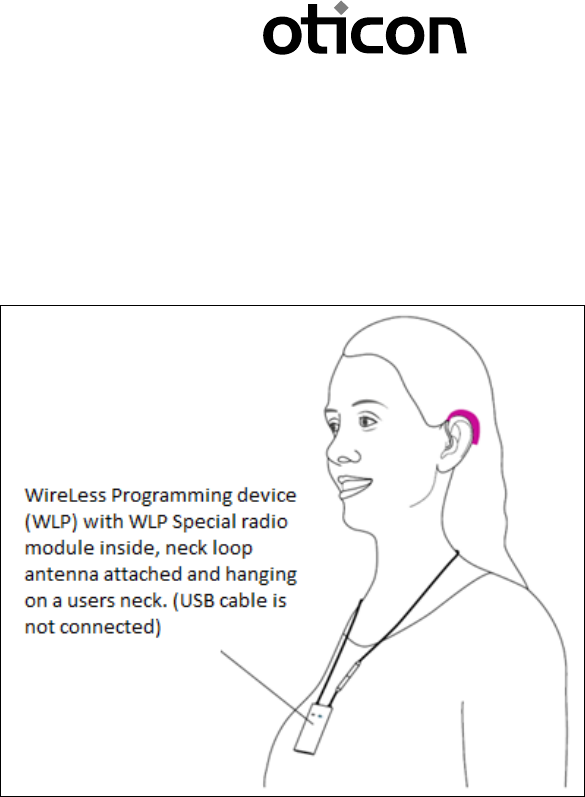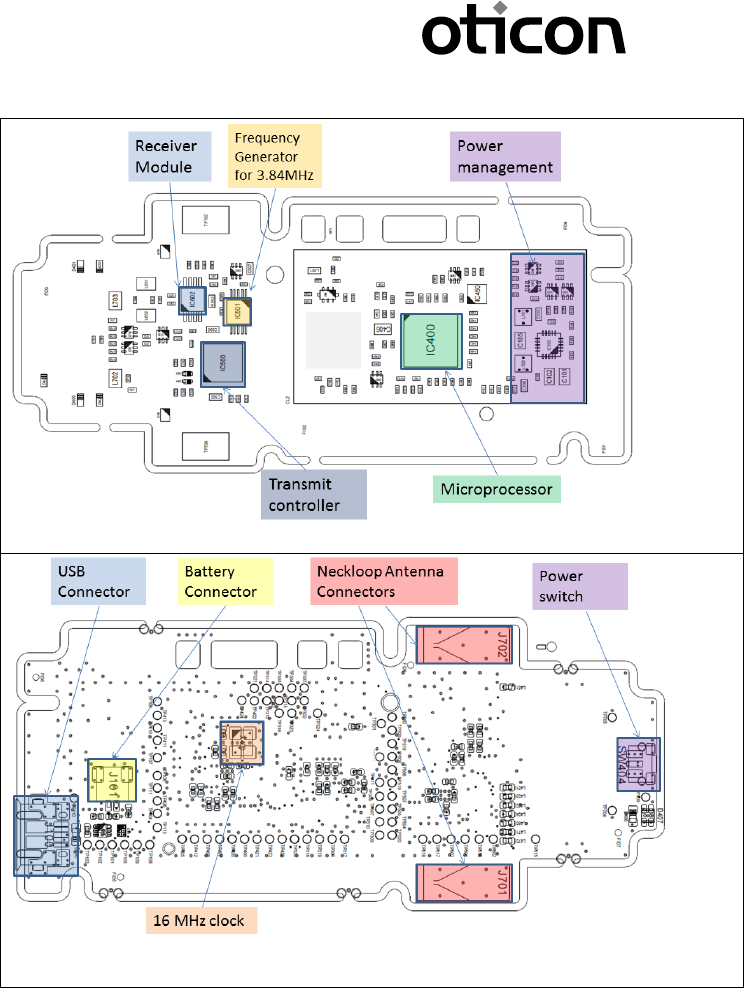Oticon A S WLPS10 WLP Special User Manual COMPANY LETTER HEAD
Oticon A/S WLP Special COMPANY LETTER HEAD
InstallationInstructions.pdf

PEOPLE FIRST
Oticon A/S Kongebakken 9 DK-2765 Smørum www.oticon.com
Main +45 39 17 71 00 Fax +45 39 27 79 00 Denmark CVR-no. 42334219 1
Oticon Radio Model - Quick Installation Guide
Radio Model Name: WLP Special
The WLP Special Radio Module is a module intended for WireLess Programming devices (WLPs) and completely equipped with both a microprocessor host and a
short range low power radio system on board the same Printed-Circuit-Board (PCB). Besides the host and the radio system the module also includes a power
management circuit, EEPROM memory, USB connector, battery connector, two neck loop connectors and small discrete components.
When the WLP Special radio module is mounted inside plastic shells for a wireless
programming device with a neck loop antenna attached, then the whole product shall
normally be placed on the neck of an end user with one or two wireless hearing aids on the
ears, also running at a radio frequency of 3.84 MHz. The end product shall be operated by a
trained hearing care professional via a PC with Oticon certified SW controlling the product
through an USB cable.
The radio system inside the module is a low power, inductive radio transceiver working at
3.84 MHz and consisting of (see illustrations next page):
- A radio transmitter controller
- A radio receiver circuit
- A frequency generating circuit and
- A 16 MHz crystal
The low power, inductive radio transmitter is consisting of a Complex Programmable Logic
Device (CPLD) fed with data from the host, a clock oscillator and two switching transistors
feeding the modulated RF signal at 3.84MHz to a dedicated neck loop antenna.
The module mounted inside a plastic shell and with its loop antenna attached is depicted to
the right:
NB: The WLP Special radio module is ONLY intended for Oticon and OEM branded products intended for wireless programming of hearing aids at
3.84 MHz. If used for other types of products or systems, Oticon cannot guarantee continued conformance with FCC part 15 regulations. Because of
this and due to limited shielding of the module, the WLP Special radio module is only approved with a limited modular approval.

PEOPLE FIRST
Oticon A/S Kongebakken 9 DK-2765 Smørum www.oticon.com
Main +45 39 17 71 00 Fax +45 39 27 79 00 Denmark CVR-no. 42334219 2
Oticon Radio Model - Quick Installation Guide
Radio Model Name: WLP Special
The WLP Special Radio Module with all its mounted components is
intended to be installed as a module into Oticons WireLess Programming
devices (WLPs), (e.g. the FittingLINK WP-1) or similar OEM branded
products (like Bernafon).
The module requires only a battery to be mounted together with its neck
loop antenna in an external plastic shell (as shown on the previous page).
The module requires no microphones or speakers as no sound only data is
streamed wirelessly to connected devices (e.g. Oticons wireless hearing
aids).
The module has its power management subsystem including all voltage
regulators and the charging circuit on board. Also all data interfaces
(input-output) on the board are buffered.
The module PCB is depicted to the right with its main components and
connections:
WLP Special Radio Module PCB (Top side)
WLP Special Radio Module PCB (Bottom side)

PEOPLE FIRST
Oticon A/S Kongebakken 9 DK-2765 Smørum www.oticon.com
Main +45 39 17 71 00 Fax +45 39 27 79 00 Denmark CVR-no. 42334219 3
Oticon Radio Model - Regulatory Label Information
Radio Model Name: WLP Special
Contains: FCC ID: U28WLPS10
NOTICE:
This device complies with Part 15 of the FCC Rules (hereunder §15.107/207, §15.109/209 and §15.223).
Operation is subject to the following two conditions:
(1) This device may not cause harmful interference, and
(2) This device must accept any interference received, including
interference that may cause undesired operation.
Changes or modifications made to this equipment not expressly approved by Oticon A/S may void the FCC authorization to operate this equipment.